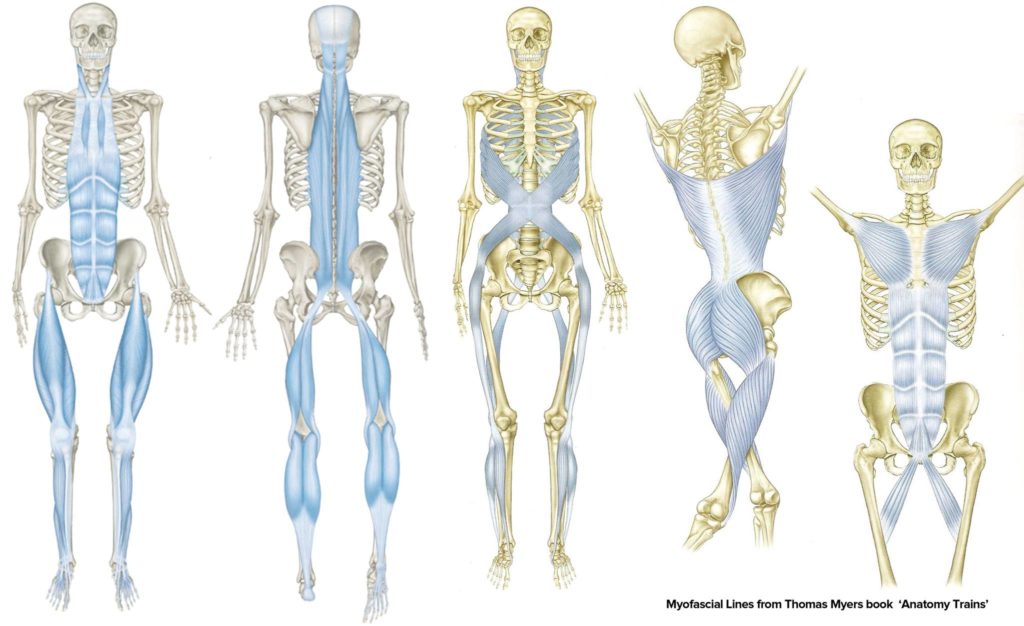Fascia and Why it can Cause Us Pain
It’s important to keep your fascia resilient and healthy
Resilient and healthy fascia comes – – in part – – from stretching, twisting, and compressing the body in a variety of movements under different conditions.
Case-In-Point: Have you ever experienced unexplained stiffness in the body that lingers on and on? Maybe you had an injury or surgery that has left you with stiffness in that area.
Similarly, “muscles” can become stiff, especially when we do not use them or do not move a particular joint in all directions.
There is something else in our bodies that may get stiff: this body part is known as “fascia.” Fascia is the connective tissue in the body that holds everything in place. The fascia is the second skin made up of fibrous tissue that runs from the bottom of the toes up the back and over the head. Then it continues down the front of the body to the toes completing the path. Just like the skin, fascia is ‘continuous.’
The fascia likes movement to keep it healthy. After an injury or surgery, the tendency is not to move that part of the body. In some cases, one may never return to previous movement patterns again because “we” compensate in various ways – – sometimes without realizing it. The muscles then move differently, and the fascia has the potential to become stiff. One would think that only affects one part of the body. Maybe or maybe not!
Tom Meyers, the founder of Anatomy Trains, has done extensive research on the fascia. Through that research, he has come to understand that not only is fascia a second skin, but it is also intertwined throughout the body.
How an injury or tightness in one area of the body can affect another
Fascia connects different parts of the body through “meridians.” Currently, there are 12 meridians or myofascial lines that have been documented in the human body. That explains why tightness in one part of the body may affect another part. For example, the meridian lines connect the hips and shoulders such that a shoulder injury could affect the opposite hip. Previous anatomy lessons made it seem that all body parts are independent. Not so now! Understanding the 12 anatomical myofascial lines helps us to understand how our body moves and how one part of the body affects another. 
“Tech neck,” rolling the head and shoulders while leaning forward over our many technology devices, affects the front and back of the body. If one continues to have “tech neck” all day, the fascia in the front of the body may get stiff and affect the fascia in the back of the body. Remember how the fascia that makes up the “second skin” is also continuous.
Eventually, our bodies become accustomed to being in that “tech neck” position. The result may be stiffness and pain in the muscles, as well.
The more pain and stiffness, the less we move, and the more we feel it. It is a circle of negative consequences.
Every element is observed and considered during an assessment
Private clients are typically amazed that “imbalances, limited mobility, pain, and stiffness in one part of the body can affect another part of the body.”
When evaluating a client, the meridian lines are considered as well as body alignment, muscle imbalances, and range of motion. In some cases, improvement in one part of the body may actually ‘improve’ other areas, especially those connected along the meridian lines.
When participating in a yoga or exercise class, note all locations where you feel any issues. For example, it could be that when working on hip openers, the opposite shoulder may benefit.
IN CONCLUSION: There are over 600 muscles and 360 joints in the body. Some joints move more than others. A shoulder, for example, can move in 6 directions. Resilient and healthy fascia comes from stretching, twisting, and compressing the body in a variety of movements under different conditions. We will advance this conversation the next article with more examples.
If you would like help on your wellness journey, schedule a private consultation.
Related Articles:
The Motivation Paradox: Action is the Catalyst for Healing Back Pain
Discover the Motivation Paradox of Back Pain—why waiting for motivation keeps you stuck and how action is the true catalyst for healing. Learn science-backed strategies to break the pain cycle and reclaim mobility.
Transform Back Pain Anxiety: From Uncertainty to Empowerment
Discover how to navigate pain anxiety with empowerment. Embrace uncertainty and reclaim your healing journey through mindfulness and resilience.
Transforming Your Relationship with Back Pain: A Mindset Revolution
Back pain is more than a physical challenge—it's a profound psychological journey. The real battle isn't just in your muscles and joints, but in your mind. Your thoughts can either be a prison or a pathway to healing. Reframing Your Inner Narrative When chronic pain...
Embracing Change: A Journey of Small Steps
Embracing change through small steps: Focusing on small, consistent steps emphasizes sustainability and avoids overwhelming change, which is key to maintaining health goals.




